Over the years, I’ve encountered countless pet owners who are deeply concerned about the health and well-being of their beloved animals. One topic that frequently arises in our discussions is the quality of air in our homes. Many are unaware of the invisible threats that linger in the air, from pet dander to hair and odors, which can affect not only our health but also the health of our pets.
As a veterinarian and a pet lover, I believe it’s crucial to address these concerns and provide solutions that can make our homes a safer haven for everyone. That’s why I’ve taken the time to research and compile a list of the best air purifiers specifically designed for pet owners. In this blog, I’ll be sharing my top picks to help you combat hair, odors, and dander, ensuring a cleaner and healthier environment for both you and your pets. Let’s embark on this journey to breathe easier and live better.
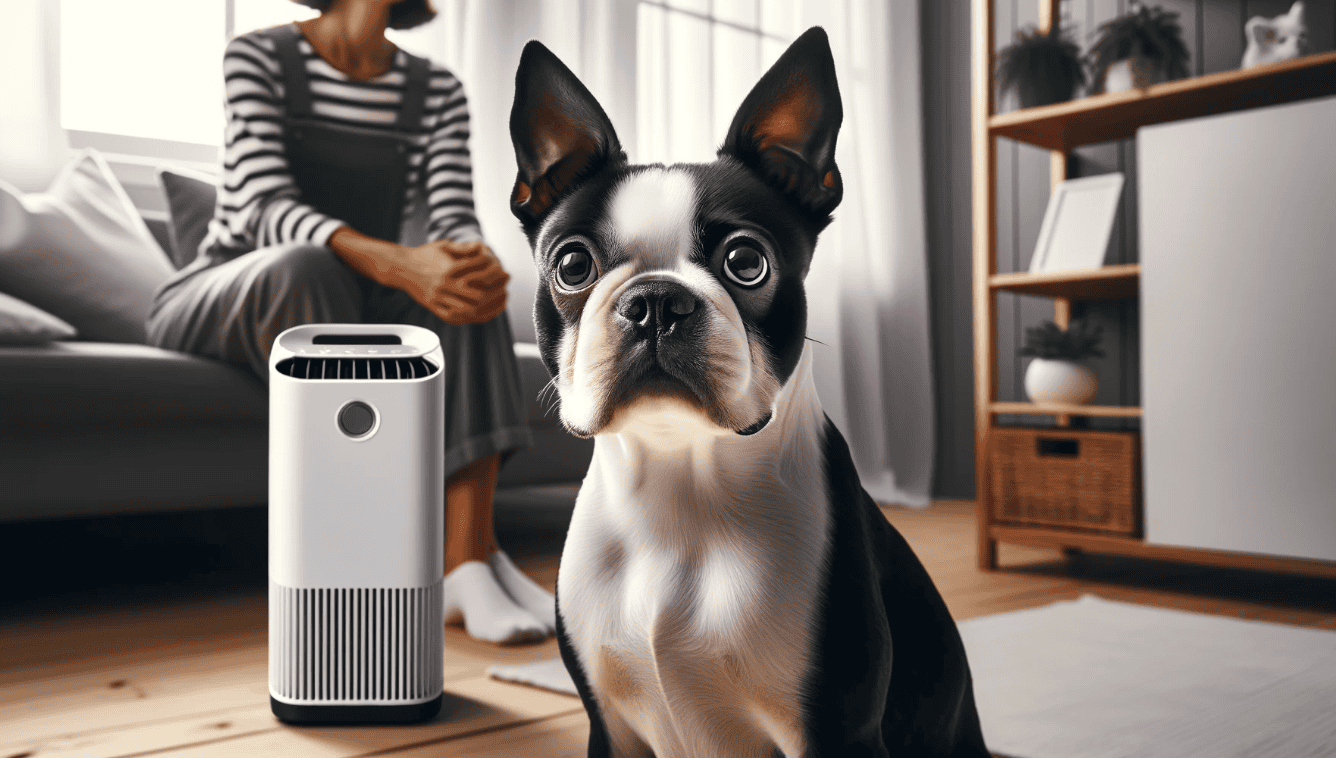
Why Pet Owners Need an Air Purifier
As pet owners, we cherish the joy, companionship, and unconditional love our furry friends bring into our lives. However, with these blessings come certain challenges, especially when it comes to maintaining the air quality in our homes. Here’s why every pet owner should consider investing in an air purifier:
- Pet Dander: One of the most common allergens in households, pet dander is composed of tiny, even microscopic, flecks of skin shed by cats, dogs, rodents, birds, and other animals with fur or feathers. For individuals with allergies or asthma, inhaling dander can trigger sneezing, congestion, and other respiratory symptoms.
- Hair and Fur: While pet hair itself isn’t an allergen, it can collect dander, dust, and pollen, spreading these allergens throughout the home. Hair and fur can also clog air vents and reduce the efficiency of your home’s heating and cooling systems.
- Odors: Let’s face it; pets can be smelly. Whether it’s that distinct wet dog smell or the scent of the litter box, pet odors can become pervasive. An air purifier with an activated carbon filter can help neutralize these odors, keeping your home smelling fresh.
- Reduced Airborne Allergens: Pets often bring in pollen, mold spores, and other outdoor allergens into the home on their fur and paws. An air purifier can help capture these particles, reducing the overall allergen load in your indoor environment.
- Healthier Living Environment: Clean air is essential for our well-being. By reducing the concentration of airborne pollutants, air purifiers can help decrease the risk of health issues related to poor air quality, benefiting both humans and pets.
- Protection for Sensitive Individuals: Infants, the elderly, and individuals with compromised immune systems or respiratory conditions are particularly vulnerable to airborne irritants. An air purifier can provide an added layer of protection for these sensitive family members.
While our pets bring immeasurable joy to our lives, they also introduce specific challenges related to air quality. An air purifier serves as a proactive solution, ensuring that the air we breathe is as clean and healthy as possible. As pet owners, it’s our responsibility to create a safe and comfortable environment for all members of our household, and investing in an air purifier is a significant step in that direction.
Vet’s Perspective: Why Clean Air Matters for Pets
From my years in veterinary practice, I’ve come to realize that while many pet owners are keenly aware of the importance of nutrition, exercise, and regular check-ups for their pets, the quality of the air their pets breathe often goes overlooked. Yet, just as clean air is vital for human health, it’s equally crucial for our four-legged companions. Here’s why:
- Respiratory Health: Just like humans, pets can suffer from respiratory issues. Dogs and cats, in particular, have sensitive respiratory tracts. Polluted indoor air can exacerbate conditions like asthma in cats or lead to bronchitis in dogs. Ensuring clean air can help alleviate symptoms and reduce the frequency of flare-ups.
- Allergies in Pets: Believe it or not, pets can have allergies too. They can react to the same indoor allergens humans do, such as dust mites, mold, and of course, pet dander from other animals. Symptoms can range from itchy skin and ear infections to watery eyes and sneezing. An air purifier can help reduce the concentration of these allergens, providing relief for your pets.
- Enhanced Immune System: Clean air supports a robust immune system. Young pets, like puppies and kittens, as well as senior animals, can have weaker immune systems. By ensuring they breathe clean air, you’re giving their immune systems one less challenge to combat.
- Odor Sensitivity: Our pets have a much keener sense of smell than we do. Strong odors, which might be mildly unpleasant for us, can be overwhelmingly intense for them. By neutralizing odors, we’re creating a more comfortable environment for our pets.
- Longevity and Quality of Life: Just as with humans, the long-term effects of breathing clean air can contribute to a longer, healthier life for pets. Reducing their exposure to airborne pollutants can decrease the risk of chronic health issues and improve their overall quality of life.
From a veterinarian’s standpoint, the health of your pet encompasses more than just regular check-ups, vaccinations, and a balanced diet. The environment in which they live, particularly the air they breathe, plays a pivotal role in their well-being. By prioritizing clean air in your home, you’re not only safeguarding your health but also ensuring that your pets lead happier, healthier lives.
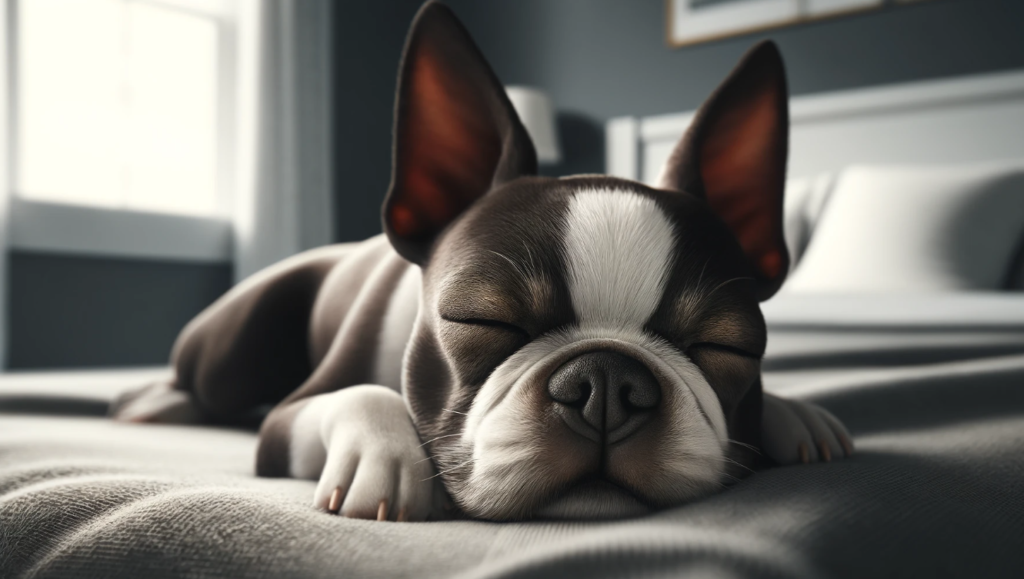
Key Features to Look for in an Air Purifier for Pets
Selecting the right air purifier for your home, especially when you have pets, requires careful consideration. Not all air purifiers are created equal, and certain features are particularly beneficial for households with furry or feathered members. Here are the essential features to look for:
- HEPA Filters: A High Efficiency Particulate Air (HEPA) filter is a must-have. These filters can capture at least 99.97% of particles 0.3 microns in diameter, such as pet dander, pollen, and dust mites. This ensures that the most common allergens are effectively trapped and not recirculated into the room.
- Activated Carbon Filters: While HEPA filters are great for particles, activated carbon filters excel at removing odors. These filters are especially effective at neutralizing pet odors, including those from litter boxes, pet beds, and wet fur.
- Size and Coverage Area: Ensure the purifier is suitable for the size of the room where it will be placed. A unit that’s too small won’t effectively clean the air in a large room. Check the purifier’s Clean Air Delivery Rate (CADR) to gauge its efficiency for your space.
- Noise Level: Pets, especially those sensitive to sounds like cats and some dog breeds, can be startled or stressed by noisy appliances. Opt for an air purifier with a quiet operation mode, especially for nighttime use.
- Filter Replacement Indicators: A feature that indicates when it’s time to change the filter can be incredibly handy. This ensures that the purifier operates at peak efficiency and that you’re always aware of the filter’s status.
- Air Quality Sensors and Auto Mode: Some advanced air purifiers come equipped with sensors that detect the quality of air in real-time. When the air quality drops, the purifier automatically adjusts its settings to clean the air more aggressively.
- Ozone-Free: Ensure that the air purifier does not emit ozone, a lung irritant that can be harmful to both humans and pets. While some purifiers use ozone to neutralize odors, it’s best to avoid these models for the health and safety of your household.
- Ease of Maintenance: Look for models that are easy to clean and where filters can be replaced without much hassle. This ensures that your purifier remains in optimal working condition with minimal effort on your part.
When shopping for an air purifier, especially with pets in mind, it’s essential to prioritize features that cater to the unique challenges pets introduce to our indoor environment. By focusing on these key features, you’ll be well-equipped to create a cleaner, fresher, and healthier living space for both you and your pets.
Top 5 Air Purifiers for Pets: Dr. Candy’s Picks
Choosing the right air purifier can be a daunting task, especially with the myriad of options available in the market. To simplify your decision-making process, I’ve curated a list of my top 5 picks based on efficiency, features, and user reviews. Here they are:
Jafända Air Purifiers Home Large Room – Dust, Smoke, Pet Hair and Dander
The Jafända Air Purifier is designed for large rooms and is equipped with a 4-stage filtration system. It utilizes a pre-filter, HEPA filter, activated carbon filter, and an ionizer to ensure comprehensive air purification. The purifier is effective in capturing pet hair, dander, smoke, dust, and pollen, making the indoor environment cleaner and fresher.
PROs:
- The 4-stage filtration system ensures thorough air purification, capturing even the smallest of particles.
- It’s specifically designed for large rooms, ensuring optimal performance in spacious areas.
- The inclusion of an ionizer provides an added layer of air purification, neutralizing airborne contaminants.
CONs:
- The product may require frequent filter replacements to maintain its efficiency.
- The ionizer function, if overused, might produce trace amounts of ozone.
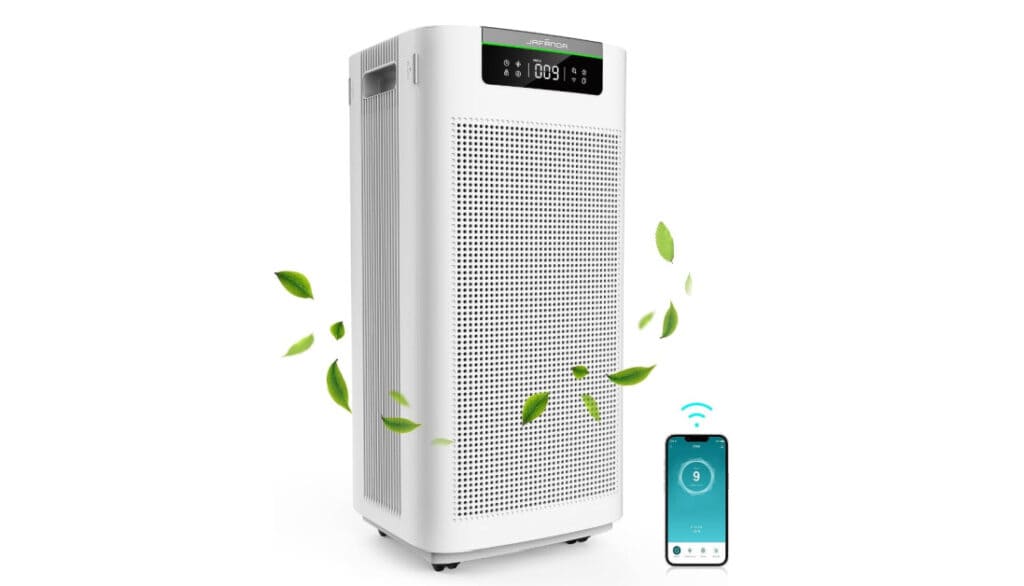
Clorox Air Purifiers for Home – Smoke, Allergies, Pet Allergens, Dust
The Clorox Air Purifier has a large room capacity, making it suitable for spaces up to 300 sq. ft. It is designed to capture 99.97% of airborne particles as small as 0.3 microns, including pet hair and dander. The purifier features a 3-stage filtration system, including a True HEPA filter, an activated carbon filter, and a pre-filter.
PROs:
- Suitable for large rooms, covering up to 300 sq. ft.
- Highly efficient in capturing minute particles, ensuring cleaner air.
- Multi-stage filtration system ensures comprehensive air purification.
CONs:
- The product requires regular filter replacements, which might be an added cost.
- The size might be too bulky for smaller spaces or for users looking for a more compact solution.
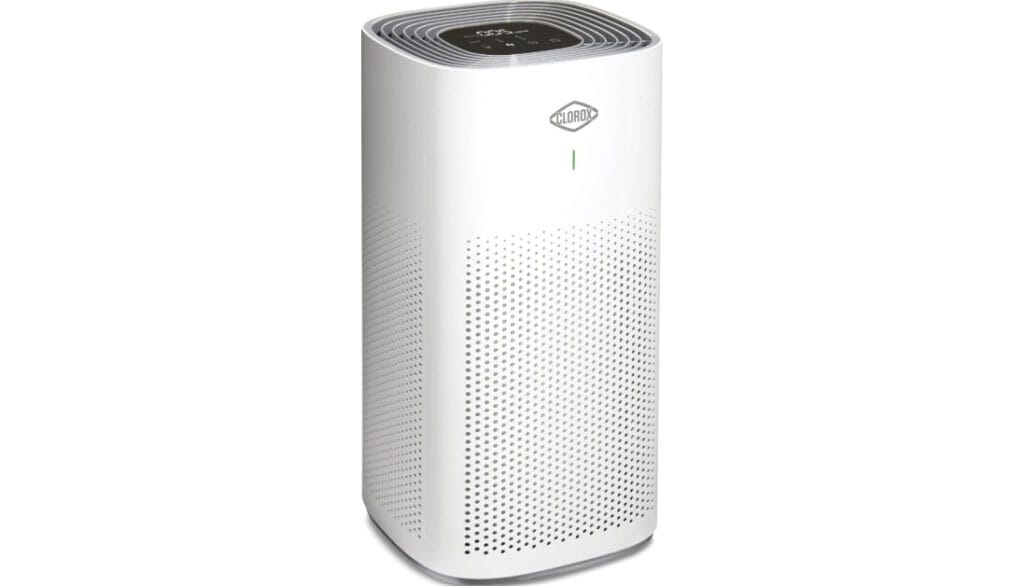
Winix 5300-2 Air Purifier with True HEPA
Winix 5300-2 Air Purifier has a large room capacity, making it suitable for spaces up to 300 sq. ft. It is designed to capture 99.97% of airborne particles as small as 0.3 microns, including pet hair and dander. The purifier features a 3-stage filtration system, including a True HEPA filter, an activated carbon filter, and a pre-filter.
PROs:
- Suitable for large rooms, covering up to 300 sq. ft.
- Highly efficient in capturing minute particles, ensuring cleaner air.
- Multi-stage filtration system ensures comprehensive air purification.
CONs:
- The product requires regular filter replacements, which might be an added cost.
- The size might be too bulky for smaller spaces or for users looking for a more compact solution.
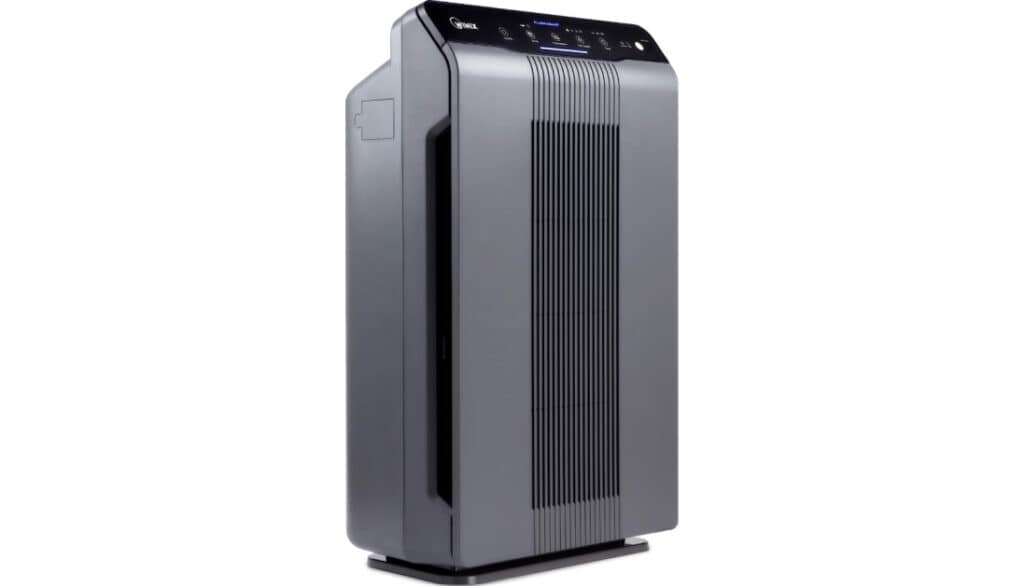
LEVOIT Air Purifiers for Home Large Room – Captures Allergies, Pet Hair, Smoke, Pollen
The LEVOIT Air Purifier is designed for large rooms and features a high-efficiency activated carbon filter. It effectively captures allergens, pet hair, dander, smoke, mold, odor, and large dust particles. The purifier also boasts a washable preliminary filter and true HEPA filter.
PROs:
- Efficiently captures a wide range of airborne particles, including pet hair and dander.
- Features a washable preliminary filter, reducing the need for frequent replacements.
- Designed specifically for large rooms, ensuring optimal air purification in spacious areas.
CONs:
- The product might be too large or bulky for smaller spaces or rooms.
- The need for multiple filters may lead to additional maintenance and costs over time.
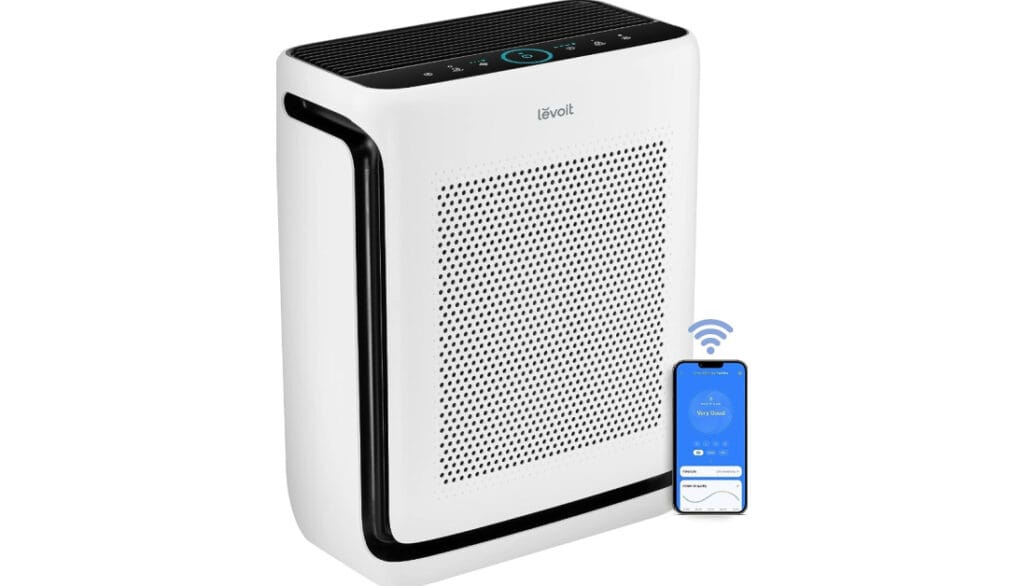
Afloia Air Purifiers for Home Large Room – Pets Dust Dander Mold Pollen, Odor Smoke Eliminator
The Afloia Air Purifier is designed for large rooms and efficiently purifies the air with its 3-stage filtration system. It boasts a high CADR rating, ensuring rapid air circulation and effective removal of contaminants. The purifier is equipped with a smart sensor that adjusts the fan speed based on the air quality, ensuring optimal performance.
PROs:
- The 3-stage filtration system effectively captures pet hair, dander, and other allergens.
- Its high CADR rating guarantees quick air purification, making it ideal for spaces with pets.
- The smart sensor feature ensures energy efficiency by adjusting the fan speed according to the air quality.
CONs:
- The device might be larger and bulkier than some other models, potentially taking up more space.
- The initial cost of the purifier might be higher compared to other brands with similar features.
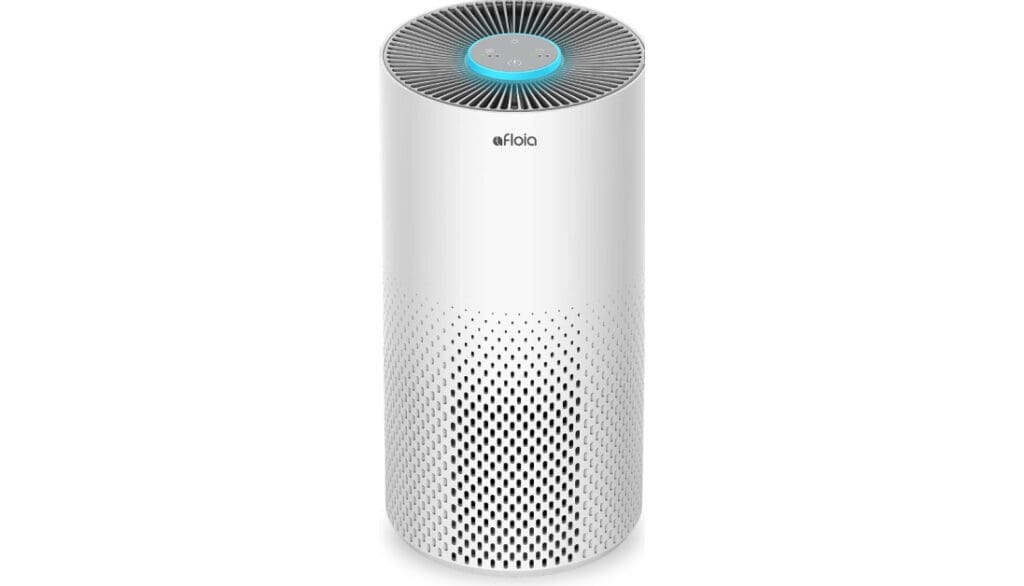
In my years of experience, I’ve found that investing in a quality air purifier can make a world of difference for both pets and their owners. While the above list is by no means exhaustive, these models stand out for their performance, features, and overall value. Remember, the best air purifier for you will depend on your specific needs, the size of your living space, and the number of pets you have. Always consider these factors when making your final decision.
Tips for Maximizing the Efficiency of Your Air Purifier
Investing in a quality air purifier is a significant step towards creating a healthier living environment, especially for pet owners. However, to truly reap the benefits of your device, it’s essential to ensure it operates at its peak efficiency. Here are some expert tips to help you get the most out of your air purifier:
- Proper Placement: Position your air purifier in a location where it can circulate air effectively. Avoid placing it behind furniture or in a corner. For best results, place it near the primary source of pollutants, like a litter box or pet bed.
- Regular Maintenance: Clean the exterior vents and grills of your air purifier regularly to prevent dust buildup. This ensures unrestricted airflow and optimal performance.
- Timely Filter Replacement: Over time, filters become saturated with pollutants and lose their efficiency. Always replace filters as recommended by the manufacturer. Some purifiers come with indicators to notify you when a filter change is due.
- Limit Open Windows: While fresh air is beneficial, leaving windows open for extended periods can introduce outdoor allergens like pollen. When using your air purifier, especially during high pollen seasons, keep windows closed to maintain indoor air quality.
- Seal Sources of Pollutants: If possible, try to minimize the sources of pollutants in your home. For instance, regular grooming of your pets can reduce the amount of hair and dander in the environment.
- Use the Right Settings: Many air purifiers come with multiple settings. For peak pet-related pollutants, use the high setting for the first couple of hours, then switch to a lower, quieter setting for continuous operation.
- Room Size Matters: Ensure your air purifier is suitable for the size of the room. Using a small purifier in a large room can reduce its effectiveness. Check the device’s recommended room size before purchase.
- Regularly Vacuum and Clean: Complement the work of your air purifier by vacuuming regularly with a HEPA-filtered vacuum cleaner. This helps reduce the amount of pet hair, dander, and other pollutants on floors and furniture.
- Avoid Ozone Generators: Some air purifiers produce ozone, which can irritate the lungs and worsen chronic respiratory diseases. Always choose ozone-free models, especially if you have pets.
- Educate Yourself: Stay updated with the latest advancements in air purification technology. This knowledge can help you make informed decisions about upgrades or additional features that can benefit you and your pets.
While an air purifier is a valuable tool in maintaining a clean and healthy environment, its efficiency largely depends on how you use and maintain it. By following these tips, you can ensure that you and your pets breathe easier and live healthier lives.
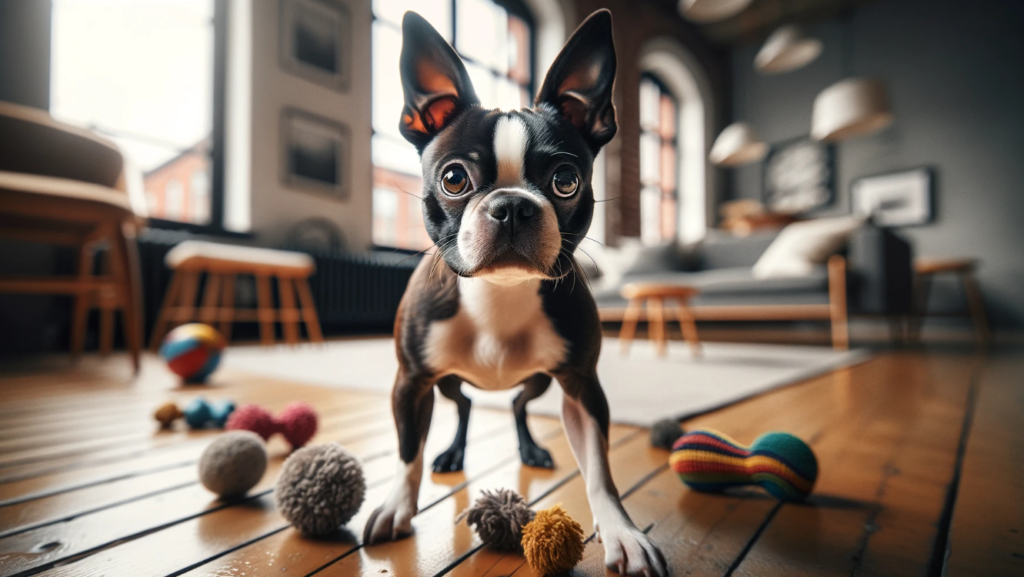
Common Myths About Air Purifiers and Pets
In the age of information, it’s easy to come across various myths and misconceptions, especially when it comes to the intersection of technology and pet care. Air purifiers are no exception. Let’s debunk some of the most common myths surrounding air purifiers and pets:
- Myth: All air purifiers remove pet odors.
- Truth: While many air purifiers can capture pet dander and hair, not all are equipped to neutralize odors. For effective odor removal, look for purifiers with activated carbon filters.
- Myth: Air purifiers can replace regular cleaning and grooming.
- Truth: Air purifiers complement regular cleaning routines but don’t replace them. Regular grooming of pets and cleaning of living spaces is essential to minimize pollutants.
- Myth: The more expensive the air purifier, the better it is for pets.
- Truth: Price doesn’t always equate to effectiveness. While some premium models offer advanced features, it’s essential to assess individual needs and research specific models before purchasing.
- Myth: Air purifiers can aggravate pets’ respiratory systems.
- Truth: Quality air purifiers designed for home use are safe for pets. However, avoid models that emit ozone, as it can be harmful to both humans and animals.
- Myth: If you don’t have allergies, you don’t need an air purifier for your pets.
- Truth: Even if you’re not allergic, pets release dander, hair, and odors that can affect indoor air quality. An air purifier can help maintain a cleaner and fresher environment for everyone.
- Myth: Air purifiers can eliminate the need for vet visits.
- Truth: While air purifiers can reduce allergens and improve air quality, they’re not a substitute for regular vet check-ups and proper pet care.
- Myth: All air purifiers can capture pet hair.
- Truth: Not all air purifiers are efficient at trapping larger particles like pet hair. Ensure the model you choose has a pre-filter or is designed to handle pet hair.
- Myth: Air purifiers are noisy and will disturb my pets.
- Truth: Many modern air purifiers are designed with quiet operation modes, ensuring minimal disturbance to both humans and pets.
- Myth: One air purifier is enough for the entire house, regardless of the number of pets.
- Truth: The efficiency of an air purifier depends on its coverage area and the room’s size. Households with multiple pets or larger spaces might benefit from multiple units.
- Myth: Air purifiers produce harmful radiation that can affect pets.
- Truth: Quality air purifiers are designed to be safe for home use and do not emit harmful radiation.
In the world of pet care, it’s essential to differentiate between fact and fiction. By debunking these myths, we hope to provide clarity and help pet owners make informed decisions that prioritize the health and well-being of their furry companions.
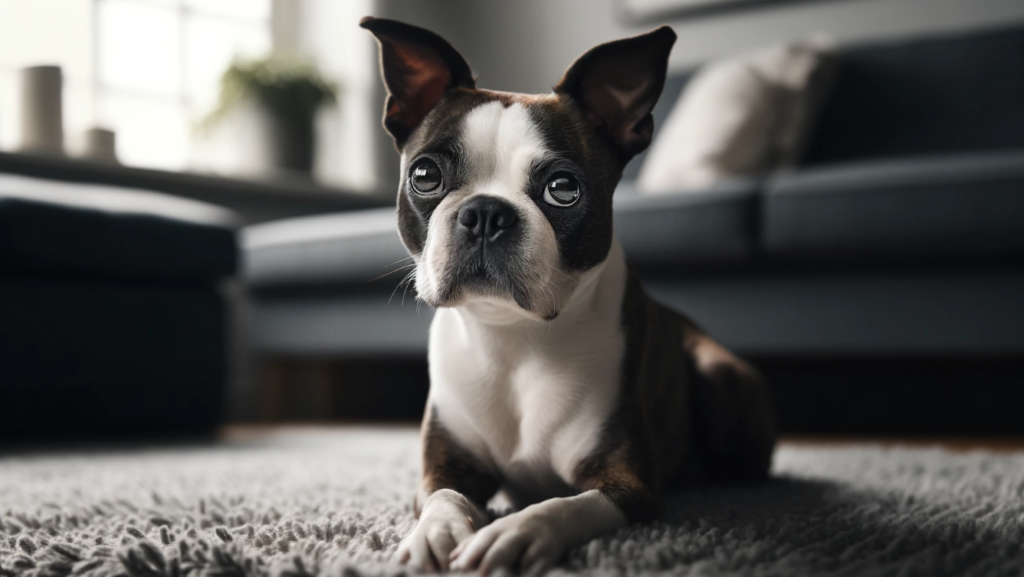
Conclusion
Our pets are more than just animals; they are cherished members of our families. Their well-being is intricately linked to the environments we create for them, and as responsible pet owners, it’s our duty to ensure that these environments are as healthy as possible. Air purifiers emerge as a powerful tool in this endeavor, offering a solution to the myriad of airborne pollutants that our pets introduce into our homes.
From understanding the importance of clean air for both humans and pets, to debunking common myths, we’ve delved deep into the world of air purification. The journey to optimal indoor air quality is one filled with choices, from selecting the right purifier to understanding its maintenance. But at its core, it’s a journey driven by love – love for our pets and the desire to provide them with the best.
As you consider integrating an air purifier into your home, remember that it’s not just about improving air quality, but enhancing the quality of life for your pets and everyone in the household. Here’s to breathing easier, living healthier, and cherishing every moment with our furry companions.
Frequently Asked Questions
A: The frequency of filter replacement can vary based on the specific model of the air purifier and the level of pollutants in your home. Generally, households with multiple pets might require more frequent filter changes due to the increased amount of hair, dander, and odors. It’s best to check the manufacturer’s recommendations and monitor the filter’s condition regularly.
A: Yes, air purifiers equipped with HEPA filters can effectively trap pet dander, a common allergen. By reducing the concentration of pet dander in the air, air purifiers can help alleviate allergy symptoms for many individuals. However, it’s essential to combine this with other measures, like regular cleaning and grooming, for the best results.
A: Quality air purifiers designed for home use are generally safe for pets. However, it’s crucial to avoid air purifiers that emit ozone, as it can be harmful to both humans and animals. Always choose ozone-free models and ensure the device operates quietly to avoid causing stress to sensitive pets.
A: The need for multiple air purifiers depends on the size of your home, the purifier’s coverage area, and where your pets spend most of their time. While one central unit might suffice for smaller homes or apartments, larger homes or homes with multiple pets might benefit from having a unit in each primary living area.
A: In addition to using an air purifier, consider regular grooming of your pets to reduce shedding and dander, vacuuming with a HEPA-filtered vacuum cleaner, washing pet bedding frequently, and ensuring good ventilation in your home. Combining these measures will provide a comprehensive approach to maintaining clean air.
